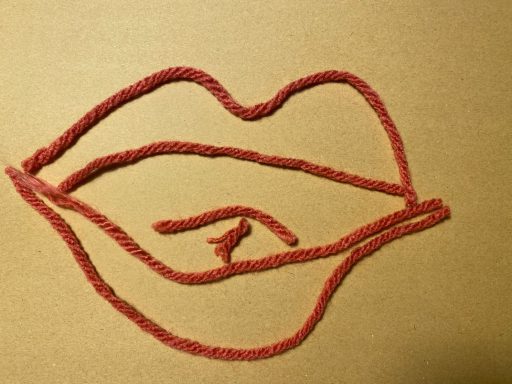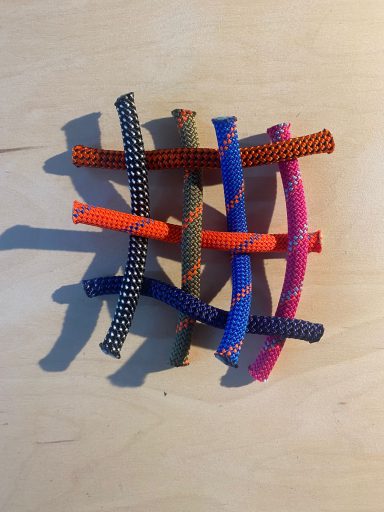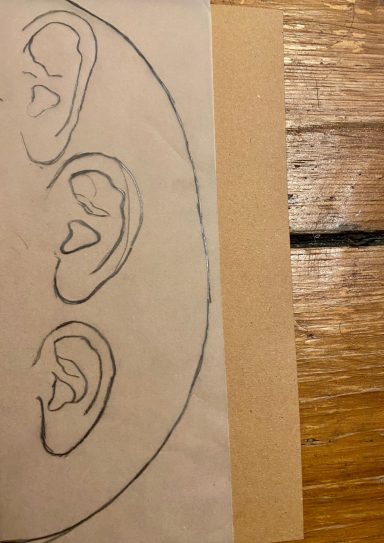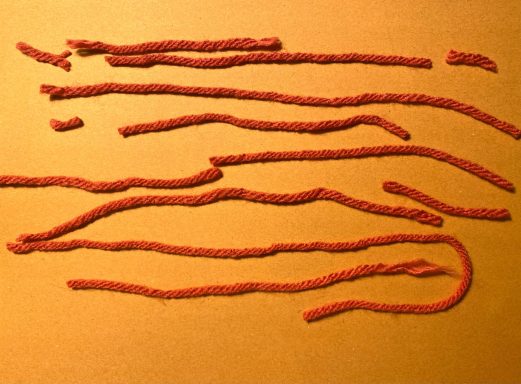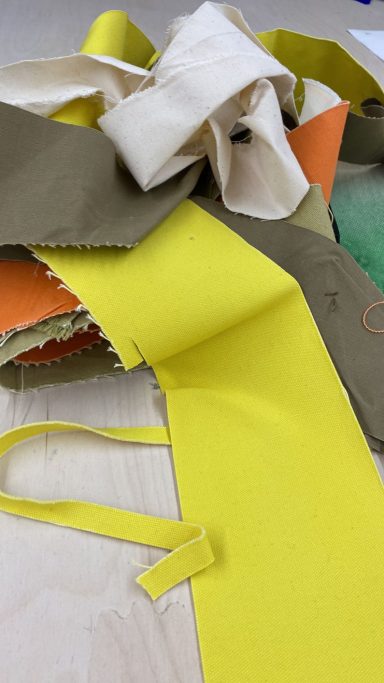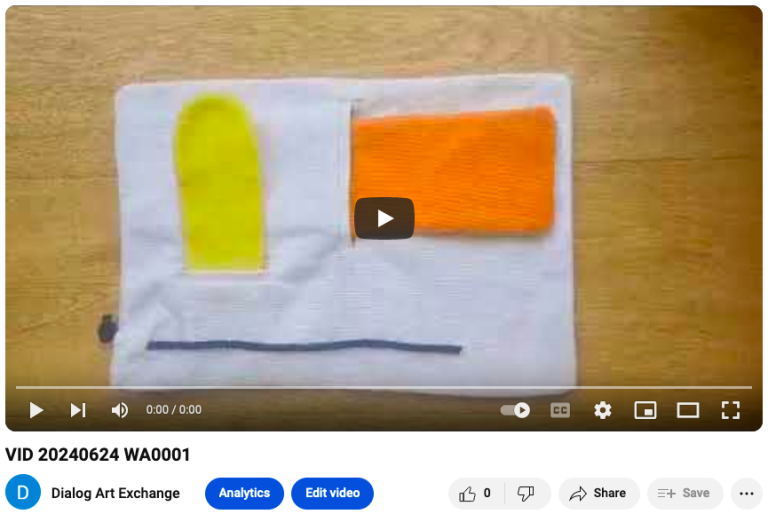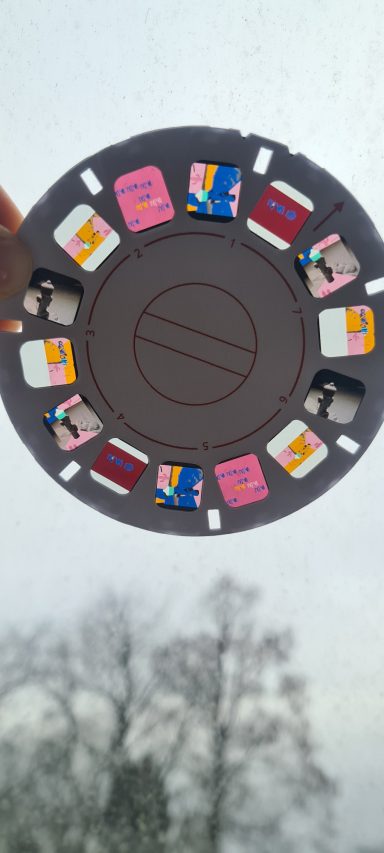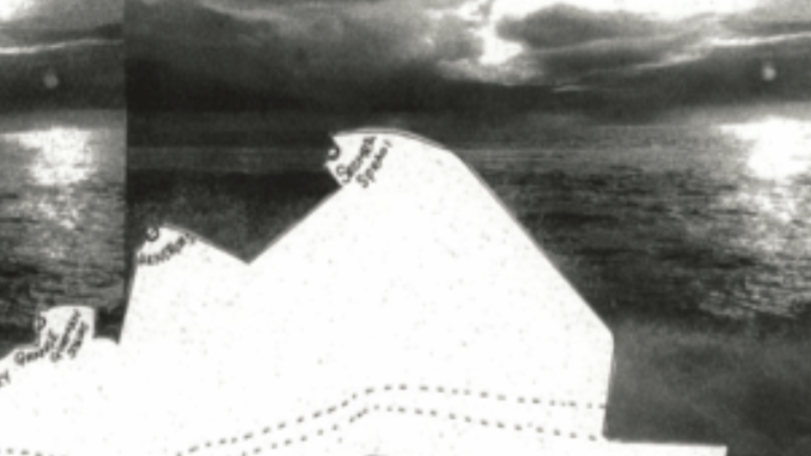1 Alei Verspoor & Alina Dietrich
CREATIVE EXCHANGE #1
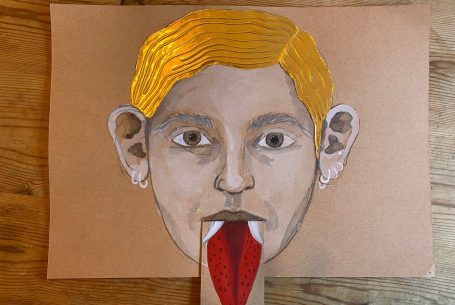
The chat
ALEI IS A PROFESSIONAL DESIGNER (WWW.PACKBAGS.NL), ALINA IS A PSYCHIATRIST IN TRAINING, CRAFTING AND MAKING ART IN HER SPARE TIME
Alina: I am opening up the dialogue
[19-11-2023, 17:16:32] Alina: That sounded too formal! It was nice to speak to you and I am excited about exchange
[20-11-2023, 08:35:22] Alei: me too!!
[20-11-2023, 17:42:58] Alei: <bijgevoegd: 00000006-PHOTO-2023-11-20-17-42-57.jpg>
[20-11-2023, 17:43:30] Alei: Just a very loose structure to start
[20-11-2023, 17:43:36] Alei: Could also become this
[20-11-2023, 17:43:57] Alei: PHOTO-2023-11-20-17-43-56.jpg>
[20-11-2023, 22:46:48] Alina: Thank you
[20-11-2023, 22:47:34] Alina: PHOTO-2023-11-20-22-47-34.jpg>
[20-11-2023, 22:48:25] Alina: PHOTO-2023-11-20-22-48-25.jpg>
[20-11-2023, 22:49:29] Alina: I know some people feel weird about ears, I hope that’s not you
[21-11-2023, 08:26:15] Alei: thank you :)
[21-11-2023, 08:26:17] Alei: no not at all!
[21-11-2023, 22:40:00] Alei: helloo good evening!
[21-11-2023, 22:40:19] Alei: reacting on the ears, ive been thinking about sounds and instruments

Amsterdam (Alei) Bristol (Alina) - 523,5 km distance
[07-12-2023, 11:34:45] Alina: I made a drawing/painted a little picture at the weekend and was thinking of sharing this with you
[07-12-2023, 11:35:01] Alei: I was just thinking about you
16-12-2023, 15:04:13] Alei: Inspired by your color palette:)
[16-12-2023, 15:09:07] Alina: Beautiful colours!
Alei: Its something new for me as i never make something thats not an actual product
[16-12-2023, 19:29:27] Alei: But i really love how your drawing had these sort of fold-out /pull-out emotions so i wanted to do something like that
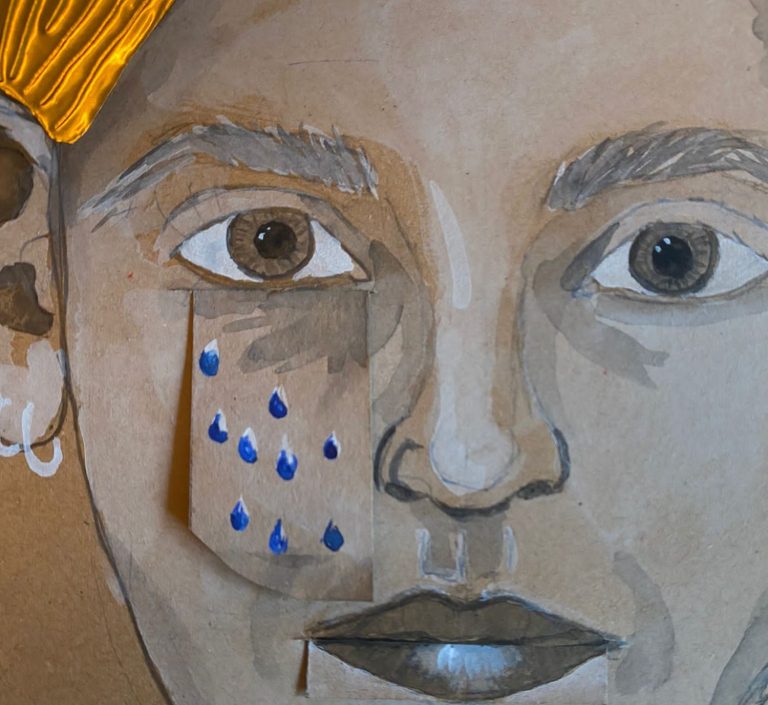
Alina's drawing changes if you pull at places


Elements that pull out
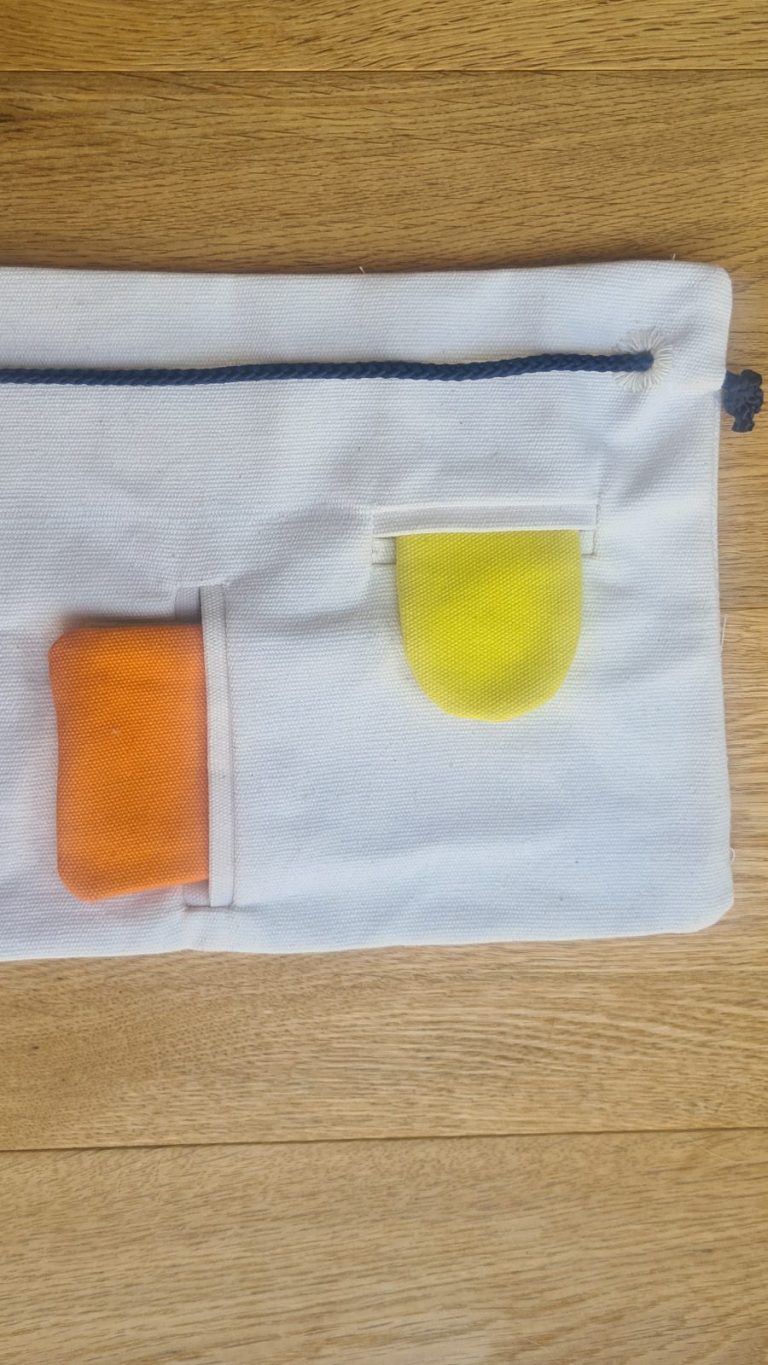

Alei has created a fabric object that can be changed by touch

[16-12-2023, 19:45:05] Alina: I love the pull out elements
[16-12-2023, 19:45:20] Alina: It seems very tactile

2 Max Molterer & Marie Molterer
CREATIVE EXCHANGE #2
Programming
Max is interested in digital fingerprints

Patternmaking
Marie is interested in creativity, co-design and imagination, visualising inner landscapes
Analogue reality glasses
Just like virtual reality glasses, the user can wear these and look into another 'reality'
A fire hydrant becomes a textile pattern
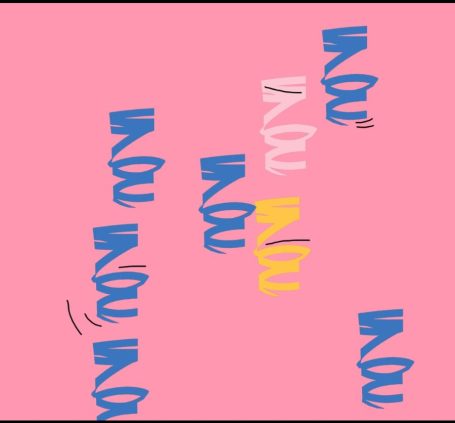
A self portrait for your online self
What is a Fingerprint? - A metaphor and its limits
In today's world, almost everyone uses a computer, whether they want to or not. And whenever we go online, we leave behind something called a digital fingerprint. But what exactly is a digital fingerprint?
Think of it like the unique patterns on your fingertips that help identify you. In the digital world, your computer's browser leaves behind traces of its characteristics as you visit different websites. These traces form your digital fingerprint.
Unlike real fingerprints that you can see and touch, digital fingerprints are made up of numbers and codes, which can be a bit tricky to understand. Surprisingly, it only takes a small amount of data—just 33 bits—to tell each person apart on the planet!
But here's the thing: while real fingerprints are easy to recognize, digital ones are not. They're like a puzzle made of numbers, not pictures. And that makes it hard for us humans to understand them easily.
So, how can we make sense of digital identity?
That's a big question! It means finding new ways to show what our digital fingerprints look like in a way that makes sense to us. As we explore this digital world, figuring out how to turn those numbers and codes into something we can understand is a challenge we need to tackle.
Humans in general can experience complexity much more easily in a visual way. So how can you show digital identity?
So, if we could see our digital fingerprints like this art, we'd notice how everyone's is different and special in its own way. This visual journey helps us appreciate how our online activities shape our digital identities.
Now, let's think about this in reverse. Imagine starting with a colorful and detailed piece of art, full of unique patterns and features. As we gradually remove those intricate details and blend the colors together, the artwork loses its distinctiveness. Eventually, it becomes a simple, plain canvas again, much like how our digital fingerprints might lose their uniqueness if we deliberately obscure our online activities for the sake of anonymity and privacy.
You can try this yourself.
Visit the website https://coveryourtracks.eff.org/ to test and see the information contained in your digital fingerprint.
Now, let me share an experiment I conducted: I took a piece of art and used a computer program to recreate it. However, with each iteration, the program had less and less information available to work with, kind of like having a smaller budget. As a result, the recreated versions of the art became simpler and less detailed, reflecting how our digital fingerprints might appear when we actively limit the information we share online for privacy reasons. The more information the fingerprint contained, the closer the image stayed to the original.
At the end, it was hardly recognisable as the original artists work. It had lost its uniqueness.


3 Elisavet Kalpaxi & Cabbage&Kraut
CREATIVE EXCHANGE #3
Dialogues - Ghost Culture

Our shared response to Dialogues consists of an exploration of community spaces. Drawing on the stories in 'Walking Together' - a collection of short stories of the refugees right to the city, childhood memories, and the fly-posting prompt by Elisavet Kalpaxi (Red Sea, 2023), Cabbage & Kraut focused on informal community spaces in Dublin, which filled the spaces neglected by traditional cultural institutions and venues, looking in particular at spaces that thrived across the city and have faded out of existence due to urban development and gentrification. They revisited the sites and marked them with a map that reveals this, currently invisible, network of community spaces. Elisavet Kalpaxi used as a starting point RE:issues, an exhibition focusing on vinyl records that was curated by Cabbage & Kraut in 2022, and produced work with sounds and pigments collected from community spaces in London. This exposition shows all the work brought together as a shared composition.
Community Print 1, monoprint on paper, 2023, Intaglio medium, pigments found in community centres (dust, pollution, dirt, food, lipstick).

Community Print 2, monoprint on paper, 2023, Intaglio medium, pigments found in community centres (dust, pollution, dirt, food, lipstick).
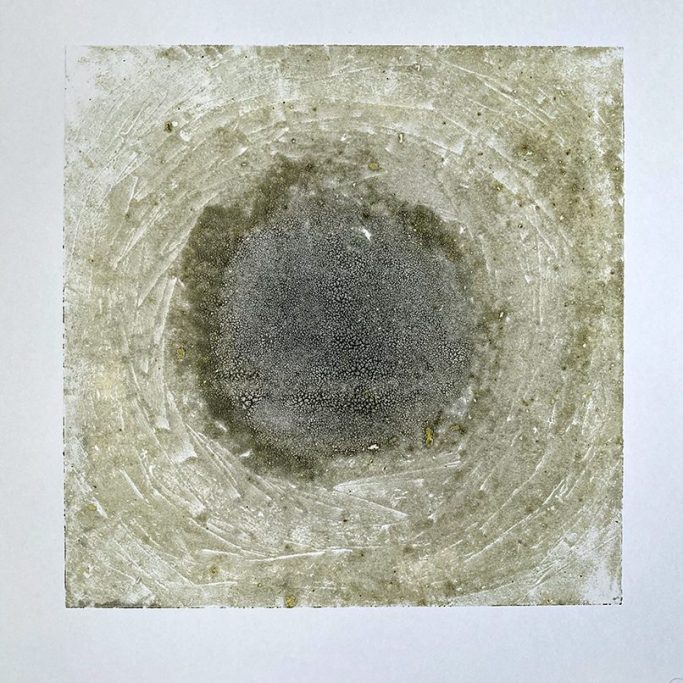
Community Print 3, monoprint on paper, 2023, Intaglio medium, pigments found in community centres (dust, pollution, dirt, food, lipstick).
Dublin Ghost Places
©Marie Molterer, Alei Verspoor, Alina Dietrich, Sarah Quinn, Maria Caravn, Elisabet Kalpaxi. Alle Rechte vorbehalten.
Wir benötigen Ihre Zustimmung zum Laden der Übersetzungen
Wir nutzen einen Drittanbieter-Service, um den Inhalt der Website zu übersetzen, der möglicherweise Daten über Ihre Aktivitäten sammelt. Bitte überprüfen Sie die Details in der Datenschutzerklärung und akzeptieren Sie den Dienst, um die Übersetzungen zu sehen.
